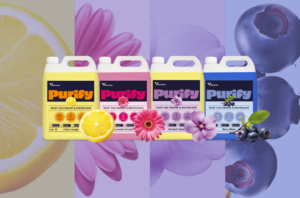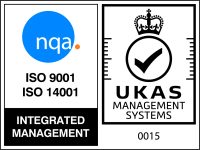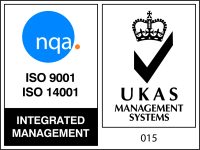The Importance of Colour-Coded Cleaning
Guidelines and rules set by the FSA exist to ensure your business is safe and hygienic. Since 2006, the FSA has recommended separating cleaning implements as good practice. One way to ensure separation is by colour coding your equipment.
It’s not compulsory to use a colour coded system outside healthcare. However, it is strongly recommended as an effective way to mitigate cross-contamination. After all, maintaining a hygienic environment requires constant cleaning and disinfecting. Especially in kitchens and clinical settings.
Having a colour-coded system also visually demonstrates to auditors that you actively control and prevent the potential spread of pathogens.
What is colour-coded cleaning?
Colour-coded cleaning is a system that has been designed to minimise cross-contamination when cleaning.
Each area of the premises is assigned equipment with a specific colour for that area. Different shades and bespoke colours can also be added to differentiate equipment further.
Colours can be expanded to suit your own system. For example, you may want to distinguish between cleaning urinals and toilets (red) from sinks (yellow). You may also add additional colours to distinguish further between areas.
Using a colour-coded system ensures you keep equipment separate while providing an easy way to be audited.
It’s essential to recognise that for colour coding to work, you cannot use the same cleaning implement between areas of different colours. That means if you have a mop for cleaning the toilet floor, you need another mop for cleaning general-purpose floors.
What cleaning equipment should be colour coded?
Ideally, anything used to clean surfaces should be assigned the appropriate colour for the area it is being used. Examples of equipment falling into this category are:
- Mops
- Cloths
- Gloves
- Brushes
- Buckets
Colour coding in transport
Paragon recommends the use of the following colour-coding system:
- Red: Toilets and urinals
- Yellow: General washrooms
- Green: Kitchens and general food areas
- Blue: General lower risk areas
Colour coding in the kitchen
It’s a good idea to apply the same rule to kitchen utensils as you do to cleaning equipment. That means separating knives, chopping boards, and cutlery depending on the food group they’re assigned to. For example, green for vegetables and red for meat and fish. This is great for stopping pathogens and good practice due to the added complication of allergies and complex dietary requirements.
Not only does this look good to the FSA when they inspect your business, it provides the confidence to reassure customers there is no violation of their dietary needs. Here are some examples of kitchen utensils that’d benefit from being colour-coded:
- Chopping boards
- Food containers
- Thermometers
- Knives
- Tongs
Why does it matter?
Would you eat food if you knew it was prepared on a surface that was cleaned with a cloth previously used around a toilet? Probably not. Colour coding your equipment reduces cross-contamination and eliminates the possibility of the above situation happening.
It’s imperative in businesses where thorough cleaning and disinfecting regimens are standard, like hospitality and clinical settings. These businesses require constant cleaning and disinfecting, and in the case of hotels, restaurants, and takeaways, things can get hectic fast. It’s easy to see how equipment can get mixed up if it all looks the same.
In the past, we’ve seen severe cases of food poisoning even at prestigious Michelin-starred restaurants like Noma and The Fat Duck, where at least 240 people caught norovirus after eating contaminated food.
How to train employees
It’s vital to include a colour coding system into an employee induction or continuous training program. Some employees with deeply ingrained habits may need additional support and training to adjust their behaviour and follow the rules. Organisations like BICSc offer a wide range of training courses and materials for businesses.
Conclusion
Colour-coding isn’t legally mandatory. But trusting people won’t ever mix up cleaning equipment isn’t a strategy, especially in peak times where employees are under increased pressure. That’s why colour-coding is so effective. It’s easy to implement and follow at all times, reducing the risk and making your establishment a cleaner place.








